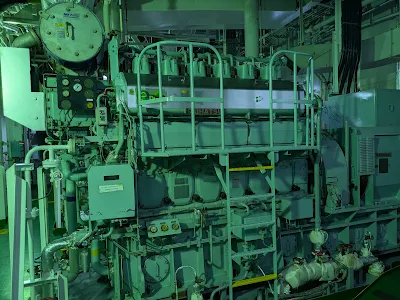What is Tappet Clearance?
Tappet clearance is the gap between the rocker arm and the valve stem (or cam follower and camshaft) when the valve is fully closed.
It compensates for the thermal expansion of engine parts and ensures valves close completely.
Tools Required
- Feeler gauge set
- Spanner set
- Torque wrench (for locking nuts)
- Screwdriver (if adjusting screw type)
- Manufacturer's manual (for correct clearance values)
When to Take Tappet Clearance
- After a major overhaul or DECARB
- At routine intervals (every 2,000–3,000 hours or as per PMS)
- When abnormal sound or loss of compression is observed
Step-by-Step Procedure
Always on a cold engine unless specified otherwise
1. Prepare the Engine - Ensure the engine is shut down and properly cooled.
- Open indicator cocks for safety.
- Turn off starting air system and tag out the engine.
2. Find Top Dead Centre (TDC)
- Rotate the engine manually using turning gear.
- Set the piston of the unit you're checking to TDC on compression stroke.
- Valve overlap of the adjacent unit
- Exhaust and inlet valves both closed
- Confirm by firing order and indication on the flywheel
- Insert the correct feeler gauge between
- Rocker arm and valve stem (for 4-stroke engines)
- Should slide in with slight drag.
- Too tight = Low clearance
- Too loose = High clearance
- Loosen lock nut on the adjustment screw.
- Turn screw clockwise (decrease) or counterclockwise (increase) clearance.
- Re-check with feeler gauge.
- Tighten lock nut and re-confirm.
Advantages of Good Tappet Clearance
1. Ensures Complete Valve Closure- Prevents compression loss and blow-by.
- Avoids hot gases leaking past valves, which can cause burned valve seats.
- Ensures valves open and close at the precise moment in the cycle.
- Supports proper air intake and exhaust, leading to efficient combustion.
- Engine components expand as they heat up.
- Correct clearance accounts for this, preventing valve sticking or misalignment.
- Proper clearance allows valves to seat fully even in cold conditions.
- Better sealing means higher compression and easier ignition.
- Prevents hammering action between rocker arm and valve stem
- Minimizes mechanical noise and stress on camshaft, pushrods, and rockers.
- Correct valve operation = optimal air-fuel mixture.
- Leads to complete combustion → less unburned fuel → better SFOC (specific fuel oil consumption).
- A valve that doesn’t close fully can't transfer heat to the seat → leads to burnt valves.
- Proper clearance ensures valves seal properly and cool during the compression stroke.
- Balanced compression and timing mean the engine delivers rated power without misfiring or hesitation.
Pro tips
- Follow the firing order to check each unit at its TDC compression.
- Common Clearance Values (Always Check Manual)
- Always on a cold engine unless specified otherwise
- Feel for “slight drag” — not loose or tight. This will definitely take some time and experience, so be patient and recheck your work.
- Use New Feeler gauges — old ones wear thinner with time.
- Always follow the manufacturer's instructions. If you are working on a new engine, read through the manual before the job.
- Try out the engine after the adjustment and listen for any abnormal noises


